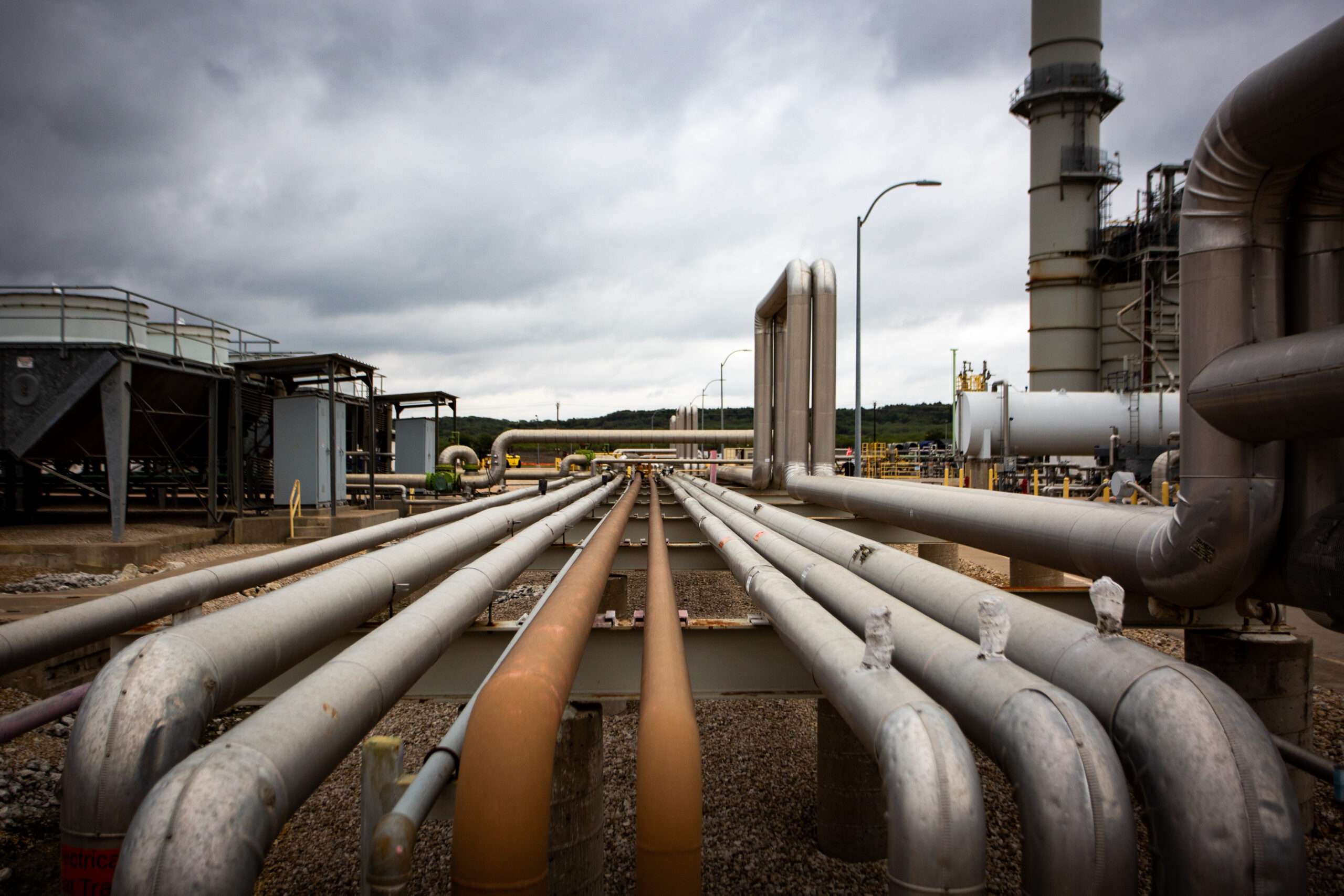Natural gas prices have been on a downward trend for months – and now they’ve hit their lowest levels since mid-2020, at the height of pandemic. The Financial Times reports prices have fallen more than 50 percent since January.
It’s a highly unusual trend for sure, one that Matt Smith is keeping an eye on as energy analyst for Kpler. He joined Texas Standard to talk about the latest in the energy markets. Listen to the interview above or read the transcript below.
This transcript has been edited lightly for clarity:
Texas Standard: So why are natural gas prices at the lowest price since 2020? Is it due to warmer temperatures?
Matt Smith: It’s partly that, but it’s a combination of things.
So we’ve got weaker demand and strong supply that has dropped prices there at $1.60 in MMBtu. Now, as you mentioned, they’re dropping nearly 50% so far this year. And so we’ve got the end of winter fast approaching. So, you know, through the worst of heating demand.
But to put this in broader context, ahead of the winter before last – so September 2022 – when Europe was facing a winter without Russian pipeline flows, they were going to be pulling in a lot of U.S. natural gas and prices in the U.S. were well above $9 in MMBtu. So now we’re down at $1.60. So it’s a really stark turnaround.
But as I mentioned, it’s supply and demand. So it’s shaping up to be the warmest winter on record, and so that’s left us needing less for heating demand. And that’s meant that natural gas storage levels in the U.S. are 11% above last year and about 16% above the five year average, the historical norm. And so great on the demand side of things.
And from a supply side of the picture, we see domestic production near record levels. And even though the U.S. is the leading exporter of LNG on a global basis, exporting about 10% of our production, there’s still enough supply to go around. So all this means our electricity bills should remain low.
Well, how long can we expect this to last? Are producers adjusting?
Well, no. So they may have to at some point. But you have a lot of natural gas in the U.S. produced from associated gas, which is from oil production.
And so in Texas and New Mexico, where you have the Permian Basin, they’re going after the oil to get that $80 a barrel, but they’re producing a lot of natural gas as a byproduct, which as long as it’s above zero, then they’re making money on it.
Well, meanwhile, gasoline prices seem to be going in the opposite direction. What’s behind that jump, and why is it so different from what we’re seeing with natural gas?
Yeah, you’re exactly right there. So again it’s a combination of things.
The key driver to gasoline prices is the price of oil. So as we’re seeing oil prices gradually rising again, that’s pushing prices at the pump higher. But we’ve also been going through a deep bout of refinery maintenance which means less gasoline is being produced. So what this means is that on the national average, we’re just under $3.30 a gallon. That’s up about $0.20 in the last month, while Texas is at $2.90, up about the same over the last month.
But the thing to bear in mind, is that Texas prices are typically one of the lowest states in the U.S. just because there’s so much with so many refiners around producing gasoline. So that’s a good thing.
But that said, we should expect prices for Texas and the U.S. to continue to grind higher here, which is the seasonal trend as we get through spring, unless we see oil prices really dropping.
So oil prices, as you said, are continuing to edge higher. With all the issues in the Red Sea, is that the key driver?
It is, yeah. So prices are trying to move lower on any given day, and then we have another incident in the Red Sea or development regarding Gaza or Iran or Iraq etc… And so there’s a lot of geopolitical tension going on which is essentially causing like a push me/pull you type relationship between the fundamentals – which is, you know, supply and demand – and geopolitical tension.
So when there’s no geopolitical headlines, prices tend to try and move lower because we’re in this seasonally weak demand period. But ultimately prices are rangebound, but they’re gradually rising to the top of that range. So with WTI, the U.S. benchmark, were approaching $80 here.
So geopolitical tension – it seems difficult to see a way away from these concerns dissipating any time soon. So it seems we’re going to gravitate around this price.














